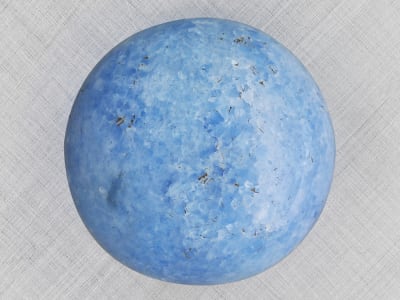Violane is a manganese-rich, coarse variety of diopside used for cabochons or carved for decorative purposes. The material is translucent to opaque and is sometimes confused with marble due to its granular texture. In the best stones the color ranges from light blue to deep violet with strong color saturation. The material can be mottled combinations of blue, purple or violet with gray and white. The main source is the Praborna mine located in Saint-Marcel, in the Aosta Valley, Italy. Other localities include southern Baffin Island, Nunavut, Canada, Greece, the Republic of Khakassia in the eastern part of Siberia, and California in the United States. A light blue massive variety of violane that is used for spheres and decorative items comes from the Ural Mountains in Russia. At the May 2007 Verona Mineral Show quartz cabochons with violan inclusions were introduced. They were reported to have come from the Aosta Valley in Italy.
General Information
Violane Colors
-
 Blue
Blue -
 Purple
Purple
Alternate Names
Violan
Countries of Origin
Greece; Unknown; United States of America; Italy; Germany
History
Violane was first discovered at the Praborna mine located in Saint-Marcel, in the Aosta Valley, Italy. August Breithaupt named the material violan in 1838 due to its violet color. When violane was entered in the “Index to Mineralogy” in 1838 the “e” was added by mistake.
Care
Violane is moderately soft, so be mindful of scratching. Avoid abrasives and solvents.
